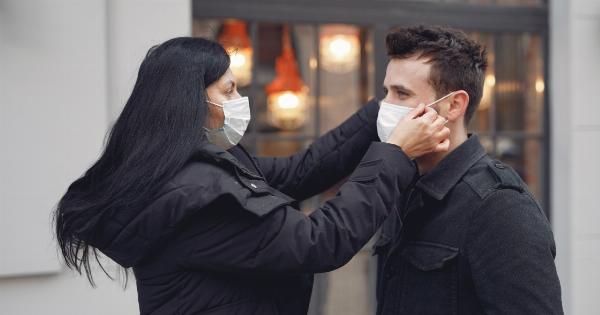Sexually transmitted diseases (STDs) are a significant public health concern worldwide, affecting millions of people each year.
While the risk of contracting an STD is generally associated with multiple sexual partners and unprotected sex, it is crucial to address the likelihood of infection in both monogamous and free relationships. This article explores the factors that influence the chances of contracting an STD in each type of relationship and highlights the importance of practicing safe sex regardless of relationship status.
Understanding STDs and Their Transmission
Before delving into the likelihood of STD infection based on relationship type, it is crucial to understand the nature of these diseases and how they are transmitted.
STDs are infections that are primarily transmitted through sexual contact, including vaginal, anal, and oral sex. They can be caused by bacteria, viruses, or parasites, and their symptoms can range from mild discomfort to more severe complications if left untreated.
The Role of Sexual Health Communication
In a monogamous relationship, where both partners have committed to being sexually exclusive, the risk of contracting an STD can theoretically be lower compared to a free relationship involving multiple partners.
However, effective communication about sexual health and prior testing is essential in reducing the risk even further. Discussing one’s sexual history, getting tested, and sharing the results can help create a foundation of trust and ensure that both partners are aware of each other’s STD status.
Sexual Monogamy and Its Impact on STD Transmission
Sexual monogamy refers to a relationship in which both partners have agreed to be sexually exclusive with each other.
In such relationships, the risk of contracting an STD can be significantly lower compared to free relationships involving multiple partners. However, it is important to note that sexual monogamy does not guarantee complete protection against STDs.
Factors Influencing the Likelihood of STD Infection in a Monogamous Relationship
While sexual monogamy can reduce the exposure to potential sources of STDs, several factors can still influence the likelihood of infection:.
- Prior sexual history: It is essential for both partners to openly discuss their sexual past and any previous instances of unprotected sex or diagnosed STDs.
- Testing frequency: Regular STD testing should be a part of sexual health check-ups, even in monogamous relationships. Testing can detect asymptomatic infections and allow for prompt treatment.
- Outside influences: Partners in monogamous relationships may face external factors that can compromise their commitment to sexual exclusivity. Infidelity or inadvertent exposure can significantly increase the chances of an STD transmission.
Understanding “Free” Relationships
“Free” relationships, often referred to as open relationships or polyamory, involve individuals who have agreed to have multiple partners while maintaining emotional connections.
In such relationships, sexual encounters with different partners are common, increasing the risk of STD transmission compared to monogamous relationships.
Risk of STD Infection in “Free” Relationships
In a “free” relationship, the risk of STD transmission is inherently higher due to the increased potential for exposure to multiple sexual partners. The more partners involved, the greater the likelihood of encountering someone with an STD.
Additionally, individuals in open relationships may not have the same level of committed communication regarding sexual health as those in monogamous relationships.
Reducing the Risk of STD Transmission in Both Relationship Types
Regardless of the relationship type, it is important to take proactive steps to minimize the risk of STD transmission:.
- Consistent condom use: Both partners should use condoms consistently and correctly to reduce the risk of STD transmission. Condoms act as a barrier, protecting against many STDs.
- Regular testing: Regularly getting tested for STDs is crucial for maintaining sexual health. Even in monogamous relationships, routine testing can help detect any asymptomatic infections and prevent further transmission.
- Vaccinations: Vaccinations, such as those for HPV and hepatitis B, are available and can offer protection against certain STDs. Discussing these options with a healthcare provider is recommended.
- Honest and open communication: Both partners should feel comfortable discussing their sexual health, prior history, and concerns. Establishing trust and maintaining open lines of communication can help navigate important decisions regarding sexual activities.
Conclusion
While the likelihood of contracting an STD may vary between monogamous and free relationships, it is crucial not to underestimate the risk in either scenario.
Open and honest communication, regular testing, condom use, and vaccinations all play a vital role in reducing the transmission of STDs.




























